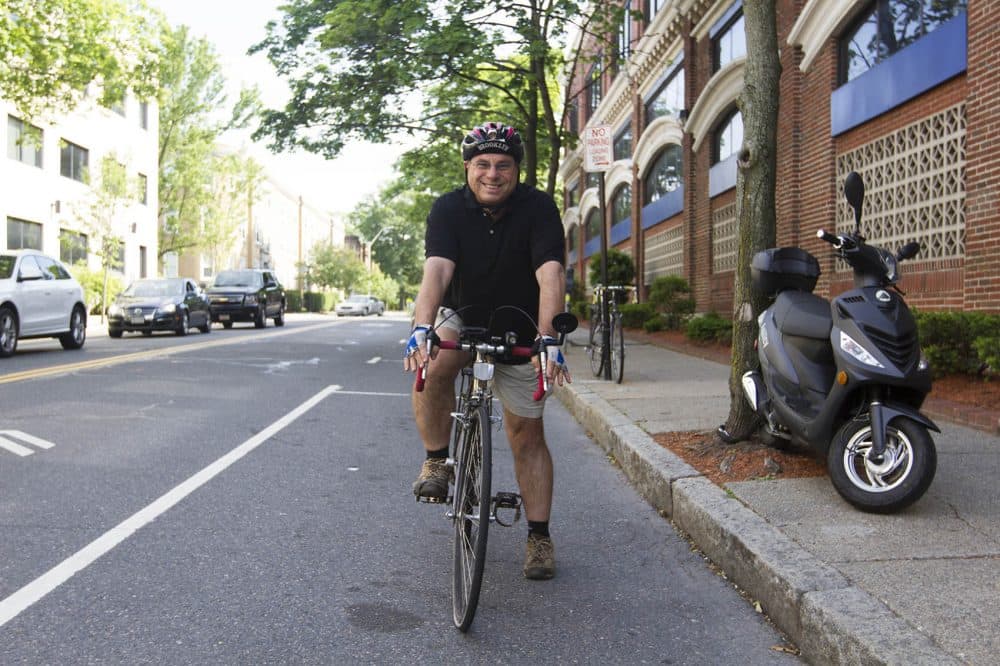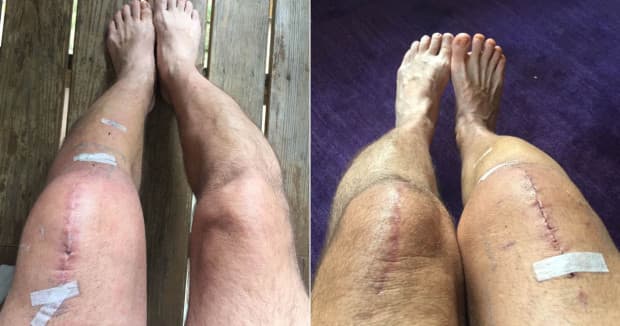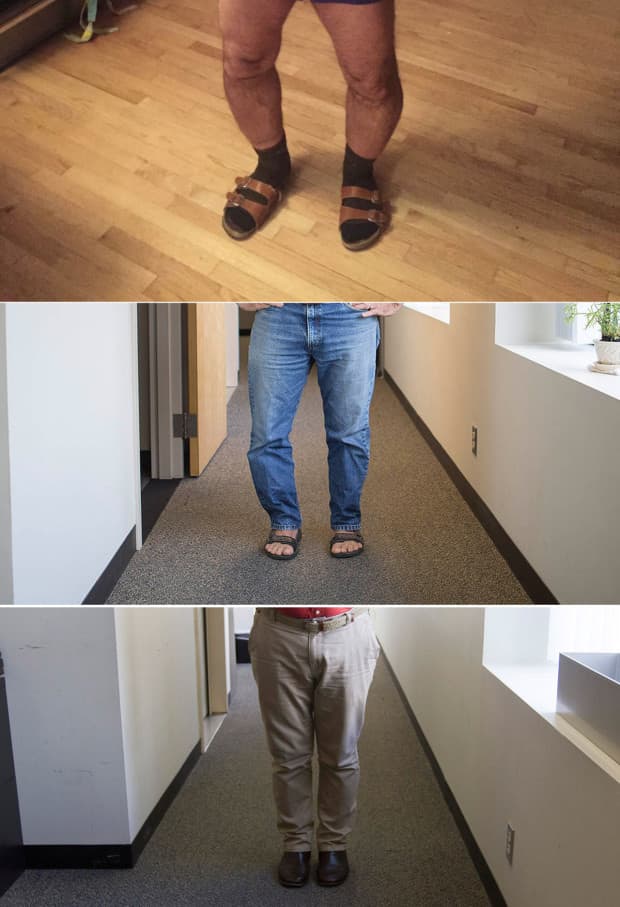Advertisement
Under The Knife: A Total Knee Replacement Surgery Diary
Resume
Total knee replacement surgery is one of the most frequently performed operations in the country, and it continues to grow. As boomers age, more and more are undergoing the procedure to restore their mobility. One of them is Bruce Gellerman, the original host of Here & Now and now a senior correspondent at WBUR in Boston. He documented his operation to repair the “bone to bone” friction of his bow legs, and for the first time, walks with straight legs.
Here & Now’s Robin Young speaks with Gellerman about his knee replacements and hers.


Interview Highlights: Bruce Gellerman
How do you know you need the replacement?
That's a great question: How do you know because there's no big sign saying you need total knee replacement, so you endure it and you take aspirin, and you endure it and you take ibuprofen, and you endure it and you get your cortizon shots, and you endure it until you can't endure it anymore. And for me, it came when I couldn't get on my bicycle anymore, I couldn't ride.
You go through the surgery--first of all, were you afraid? This is losing a portion of your body.
You know, I never thought of it that way. I knew they were going to sever my legs in half, but I treated it like a story, and I researched the heck out of it, and I knew what to expect. Or I thought I knew what to expect.
Tell us first, about pain. Talk about pain management, and if you were concerned about opioids.
I was very concerned. And my goal in all of this was to be ready for the surgery, so I did what they call pre-hab, exercises before. And then I treated physical therapy as my religion.
I did three things religiously. I iced it. I iced it, and I iced it. I use ice all the time. I got off the meds as soon as I possibly could. They really, really drugged me out. I did not like the way the made me feel. And I treated physical therapy like a full-time and half job.
You mentioned some people don't do well. You are out of pain now, right?
I have a little pain, it's not total, but it's not the arthritic pain. I do steps. I can ride my bike. I can do all those things. It's not that pain. It does feel a little tight around both knees, but it's less and less. Just this week I was able to get down on my knees and not feel any pain.
How do you know you have a good doctor?
That is such a great question. I was told, "Ask some nurses." They're the ones who see day in and day out. Ask the doctor how long they've been doing this operation and how many they've done in the last year. That's a good indication. You want somebody who specializes in knees.
You have to sort of gauge everything you do, how you want to go forward.
Guest
Bruce Gellerman, senior correspondent, WBUR. He tweets @AudioBruce.
This segment aired on June 20, 2016.